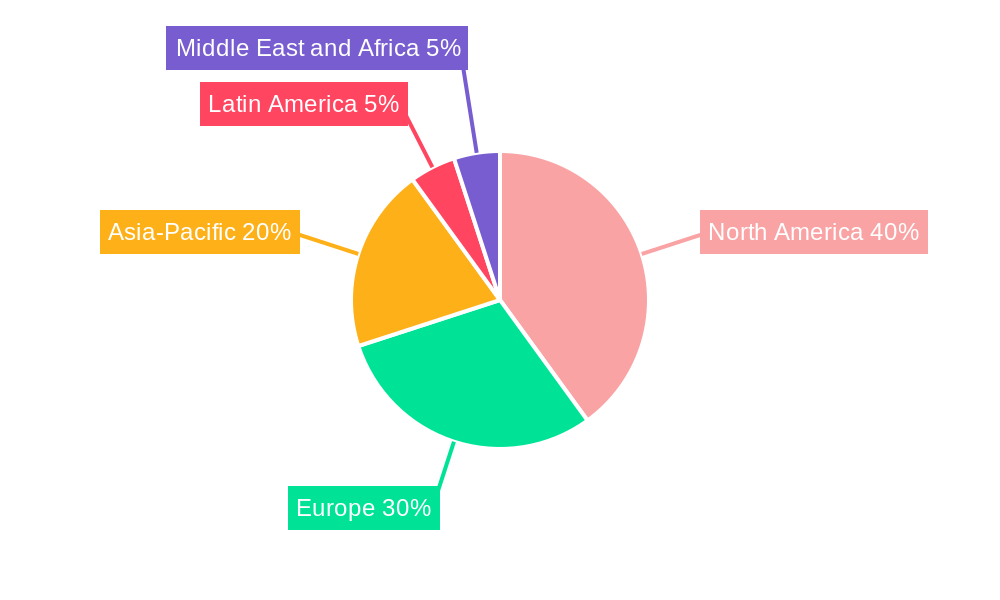Quick Summary :- A team extension temporarily adds skilled developers to support in-house teams with flexibility and control, while a dedicated development team provides a stable, long-term, fully managed solution for complex projects.
In 2025 selecting the right outsourcing model is crucial for scaling your tech business. It helps you access top talent, reduce costs and stay agile in a competitive market.
Two popular options are Team Extension and Dedicated Development Teams. Each offers distinct benefits but which is the right choice for your project? This guide breaks them down and offers detailed comparisons and insights.
What Is a Team Extension?
A Team Extension model involves supplementing your in-house team with external specialists. These team members integrate with your existing staff, but remain managed by an outsourcing provider.
It’s ideal for quickly scaling your capabilities, or accessing specific expertise without long term commitment. For instance if your team lacks experience in AI, then you can bring in AI experts on a temporary basis.
The Team Extension Service Market valued at USD 4.64 billion in 2024, is projected to grow to USD 12 billion by 2035 registering a 9.1% CAGR.
Key Features of the Team Extension Model
- Flexibility: With team extension you can easily scale resources up or down depending on workload. This adaptability ensures you only invest in the talent you need at the right time.
- Integration: Extended team members work closely. with your in-house staff following your processes and tools. This ensures collaboration feels seamless rather than like working with an external vendor.
- Cost Effective: Instead of hiring full time employees you pay only for the required expertise. This reduces long term overhead costs while giving you direct access to skilled professionals.
Advantages of Team Extension
- Specialized Talent: By extending your team you can quickly plug skill gaps with experts in niche areas like AI, blockchain or DevOps, without long recruitment cycles.
- Quick Onboarding: External professionals can join your project rapidly, minimizing downtime and helping you accelerate software development timelines compared to traditional hiring.
- Scalability: As your project evolves; You can adjust team size smoothly. This flexibility ensures you’re never overstaffed or under resourced by optimizing both productivity and costs.
Challenges and How to Overcome Them
- Cultural Integration: Different time zones, work ethics or communication styles may cause friction. Establishing clear workflows, shared tools and regular check-ins helps overcome these barriers.
- Management Overhead: Extra team members require oversight to ensure smooth collaboration. Assigning a project manager, or using agile practices reduces misalignment and keeps everyone accountable.
Team Extension Service Product Insights
- Fintech: 25% market share
- E-Commerce: 20% market share
- Healthcare: 15% market share
- Education: 10% market share
- Other: 30% market share
Team Extension Service Segmentation By Geography
The Global Market Share for Team Extension Services by region states that North America leads with 40%, followed by Europe at 30%, Asia Pacific at 20% while Latin America and the Middle East & Africa each account for 5%.
When to Choose Team Extension?
- Short Term Specialized Needs: If your in-house team lacks certain technical expertise adding external professionals on a temporary basis ensures you fill the gap without permanent hires.
- Workload Surges: During peak software development phases, team extension helps you handle increased demands while keeping delivery timelines intact, without overburdening your core team.
- Scalable Projects: If your project scope is uncertain or evolving, extending your team ensures flexibility allowing you to adjust resources based on progress and requirements.
What Is a Dedicated Development Team?
A Dedicated Development Team is a long term outsourced team that works exclusively on your project. This model is particularly beneficial for businesses that require constant and focused attention to their development goals.
Unlike the Team Extension model, where external experts integrate with your in-house team, a Dedicated Team operates as a standalone, fully managed group that handles the full scope of your project.
They’re committed to meeting your specific needs, and are available to adapt as your project grows.
Dedicated development teams are a growing trend within the expanding IT outsourcing market, which is projected to reach USD 1,219.31 billion by 2030.
Key Features of the Dedicated Team Model
- Full Management: The IT outsourcing company manages everything from recruitment to operational logistics ensuring you don’t need to handle day to day hiring or administrative tasks.
- Long Term Commitment: Dedicated teams are typically in place for months or years giving you stability and continuity in software product development. This is especially valuable when working on large scale projects.
- Seamless Integration: Even though the team is external they work as though they’re part of your organization adapting to your processes, culture and internal tools. This ensures alignment and efficient collaboration.
Advantages of a Dedicated Team
- Consistent Expertise: With a dedicated team, you get specialized knowledge focused on your project’s goals. This deep involvement allows them to understand the project inside and out ensuring high quality results.
- Time and Cost Efficiency: By outsourcing the team, you avoid the time consuming hiring process. You also don’t have to worry about ongoing HR management, office space or other operational costs.
- Scalability: As your project grows or demands increase; You can easily scale the team to meet new requirements, whether that means adding developers, designers or project managers.
Disadvantages & Risks
- Less Flexibility: A dedicated team is committed to your project, so scaling down or changing the project scope can be more challenging, compared to a flexible team extension.
- Cultural Fit: Since the team is external, there may be a learning curve when it comes to adapting to your company’s culture, communication style and processes. This requires proactive effort on both sides.
- Dependency: Relying on an outsourcing partner for long term team management can make you vulnerable if there are any operational challenges on their end, such as turnover or communication issues.
Dedicated Development Team Segmentation By Geography
The Global Market Share for dedicated development teams by region is as follows:
- North America: 25%
- Europe: 22%
- Asia Pacific: 40%
- Latin America: 8%
- Middle East & Africa: 5%
When to Choose a Dedicated Team?
- Long Term Complex Projects: If your project requires continuous work over several months or years, a dedicated team provides the stability and expertise needed to ensure smooth and consistent progress.
- Core Product Development: When building core products or systems that will be central to your business, you need a dedicated team focused entirely on your vision, ensuring they understand the nuances and long term goals.
- Scalable Resources: If your project’s demands are expected to increase over time, the dedicated model allows you to scale up the team smoothly without worrying about onboarding new people for each phase.
Team Extension vs. Dedicated Development Team: Detailed Comparison
When deciding between a Team Extension and a Dedicated Development Team, there are several factors to consider. Each model has its unique advantages and challenges, depending on your project’s needs.
Below, we’ll compare them across seven critical parameters to help you choose the right one.
Team Structure and Integration
- Team Extension: External experts join your in-house staff, using the same tools and processes. They feel like part of your team but remain administratively managed by the outsourcing provider.
- Dedicated Team: A dedicated team focuses entirely on your project. While they adapt to your workflows, they usually operate as an independent unit under the outsourcing company’s management, not fully embedded within your internal team.
Flexibility and Scalability
- Team Extension: This model offers strong flexibility allowing you to quickly add or reduce staff as project demands change. It’s ideal for businesses facing fluctuating workloads or needing short term, highly specialized skills.
- Dedicated Team: Dedicated teams provide stability for ongoing projects. However, scaling up or down requires more planning and commitment, making them less flexible for organizations dealing with frequent project changes or short product development cycles.
Cost Structure
- Team Extension: Costs are typically higher per person, but you only pay for what you need. It’s cost effective for short term needs, avoiding the overhead of permanent hires or long term commitments.
- Dedicated Team: Dedicated teams often work on fixed contracts or retainers, creating predictable expenses. While upfront costs may be higher, they’re more cost efficient for long term projects requiring consistent development resources.
Project Management & Control
- Team Extension: You retain hands on control over tasks, timelines and workflows. The extended staff works under your direction, which ensures better alignment with company goals but requires more internal oversight.
- Dedicated Team: Project management responsibilities largely shift to the outsourcing partner. You provide vision and goals, while they handle daily operations, freeing your internal team but reducing direct influence on execution.
Expertise and Focus
- Team Extension: This model adds niche expertise to complement your in-house staff. It’s perfect for closing specific skill gaps without reshaping your core team structure or changing your overall development strategy.
- Dedicated Team: Dedicated teams invest deeply in your project offering consistent expertise over the long run. Their focus is exclusive, which results in a stronger understanding of project goals and long term alignment.
Time to Onboard
- Team Extension: Onboarding is usually fast since external members adapt to existing tools, workflows and culture. They can start contributing quickly, without major adjustments or delays in project momentum.
- Dedicated Team: Onboarding may take longer as the team must understand your product vision, long term goals and processes. However once aligned, they offer smoother performance across the project lifecycle.
Risk and Long Term Commitment
- Team Extension: Risks are lower because engagements are flexible and temporary. If performance doesn’t meet expectations; Scaling down or replacing talent is easier without disrupting your overall operations.
- Dedicated Team: This model requires stronger commitment and carries more risk. Changes in direction or scope are harder to implement making success heavily dependent on stable communication and project clarity.
Also Read: In house Software Development Vs Outsourcing
Cost Comparison: Team Extension vs. Dedicated Development Team
Choosing between Team Extension and Dedicated Development Teams requires understanding cost dynamics. Each model has unique financial impacts making careful evaluation essential for aligning with your project’s budget and goals.
Cost Dynamics for Each Model
Team Extension follows a pay-as-needed approach ideal for fluctuating workloads. You only pay for specific skills temporarily avoiding long term commitments and unnecessary overhead costs making it flexible for short-term demands.
Dedicated Development Teams usually operate on long term, fixed or retainer-based contracts. This ensures stability and reliability but often requires higher upfront investment and ongoing costs, making it better suited for long-term projects.
Hidden Costs: Onboarding, Management, Turnover, Knowledge Transfer
Team Extension may appear cheaper initially, but onboarding, training and integration add hidden costs. Extra oversight and management efforts are often required to ensure seamless collaboration with in-house teams.
Dedicated Teams also face hidden costs, including recruitment, turnover and knowledge transfer during scaling or transitions. While more predictable, these expenses must be considered when planning long-term financial commitments.
Short Term vs. Long Term Cost Efficiency
Team Extension is cost efficient for short-term or highly specialized projects. However, frequent resource changes may affect consistency, making it less suitable for companies needing continuous long term development stability.
Dedicated Development Teams demand higher initial investment but prove cost effective over time. For ongoing, large scale projects, their predictable expenses deliver stronger long term value ensuring business growth and sustained innovation.
Get Your Custom Resource Estimate → Offshore Team Cost Saving Calculator
Comparison Table: Team Extension vs. Dedicated Development Team
The table below highlights the main differences making it easier to see which option aligns with your project’s needs.
| Criteria | Team Extension | Dedicated Development Team |
| Engagement Model | External specialists temporarily join in-house team | Independent outsourced team dedicated exclusively to your project |
| Commitment | Short term, flexible, project based | Long term, stable, ongoing partnership |
| Scalability | Highly flexible scale resources up or down easily | Scalable but requires planning; not as quick to adjust |
| Control & Management | Managed internally by your in-house leads | Outsourcing partner handles daily management, reducing your oversight load |
| Cost Structure | Pay only for required skills; better for short term needs | Predictable retainer/fixed costs are better for long term efficiency |
| Onboarding Speed | Rapid onboarding specialists adapt quickly to workflows | Longer onboarding; requires full project immersion and alignment |
| Integration | Works within your tools, processes and culture | Functions as a semi independent team adapts to your ecosystem over time |
| Best Use Case | Filling niche skill gaps, peak workloads, short term projects | Large scale, core product development, long term growth projects |
How to Hire & Manage Each Model
Hiring and managing outsourced teams requires different approaches depending on whether you choose a Team Extension or a Dedicated Development Team. Let’s break down the steps for each model so you can succeed.
Steps for Hiring a Team Extension
- Start by identifying the exact skill gaps in your in-house team. Then partner with a reliable software development outsourcing firm who can quickly provide vetted professionals with the right expertise for your project.
- Carefully evaluate candidates for technical skills and cultural compatibility. Since they’ll be working closely with your team, smooth integration is essential. Always test communication and collaboration skills alongside technical knowledge.
Steps for Hiring a Dedicated Team
- With a Dedicated Team, begin by outlining your long term product goals and scope. Share this vision with vendors, so they can assemble a team tailored to your specific project requirements.
- During selection, focus on a partner’s ability to provide ongoing support and scalability. Since this is a long term collaboration ensure the vendor offers structured management processes and strong retention strategies.
Onboarding Best Practices
- For both models, onboarding sets the tone for collaboration. Introduce new members to your workflows, tools and company culture. Create detailed documentation and provide early feedback loops to speed up alignment.
- For Team Extension, keep onboarding lightweight since speed matters. For Dedicated Teams, invest more time in aligning them with long term goals, processes and communication habits to ensure stability and consistency.
Common Mistakes to Avoid
- One common mistake is failing to set clear expectations early. Misaligned goals often lead to frustration, whether you’re extending your team or onboarding a dedicated unit. Transparency is critical from the start.
- Another mistake is neglecting communication rhythms. Without scheduled check-ins, collaboration can quickly break down. Use project management tools, regular standups and progress reviews to keep everyone aligned and engaged.
Conclusion
Choosing between Team Extension and opting to hire dedicated developers isn’t about which model is superior; it is about which best aligns with your project’s goals, resources and long term growth vision.
The right outsourcing model depends on your timeline, budget and project scope. By matching the model to your business needs, you can accelerate innovation and maintain a competitive edge in 2025.
Partner with eSparkBiz to access skilled developers and scale your business with confidence today.
-
What is the main difference between Team Extension and a Dedicated Team?
Team Extension integrates external experts into your in-house team for short term needs, while a Dedicated Team works exclusively on your project long term offering stability and deeper involvement.
-
Which model is more cost-effective?
For short term or specialized projects, Team Extension is cost efficient since you only pay for expertise when needed. Dedicated Teams become more cost effective for long-term, complex projects requiring continuous development.
-
Can a Team Extension evolve into a Dedicated Team?
Yes. Many companies start with Team Extension for flexibility, then transition into a Dedicated Team once the project grows, requiring stability, deeper commitment and long-term collaboration.
-
Which option works best for startups?
Startups often begin with Team Extension to access specialized talent quickly. As they scale and require ongoing development, transitioning to a Dedicated Team ensures stability and product continuity.
-
How do you ensure smooth communication with remote teams?
Set clear workflows, use project management tools like Jira or Trello, establish regular check-ins and promote cultural alignment. Consistent communication keeps collaboration seamless across time zones and locations.







